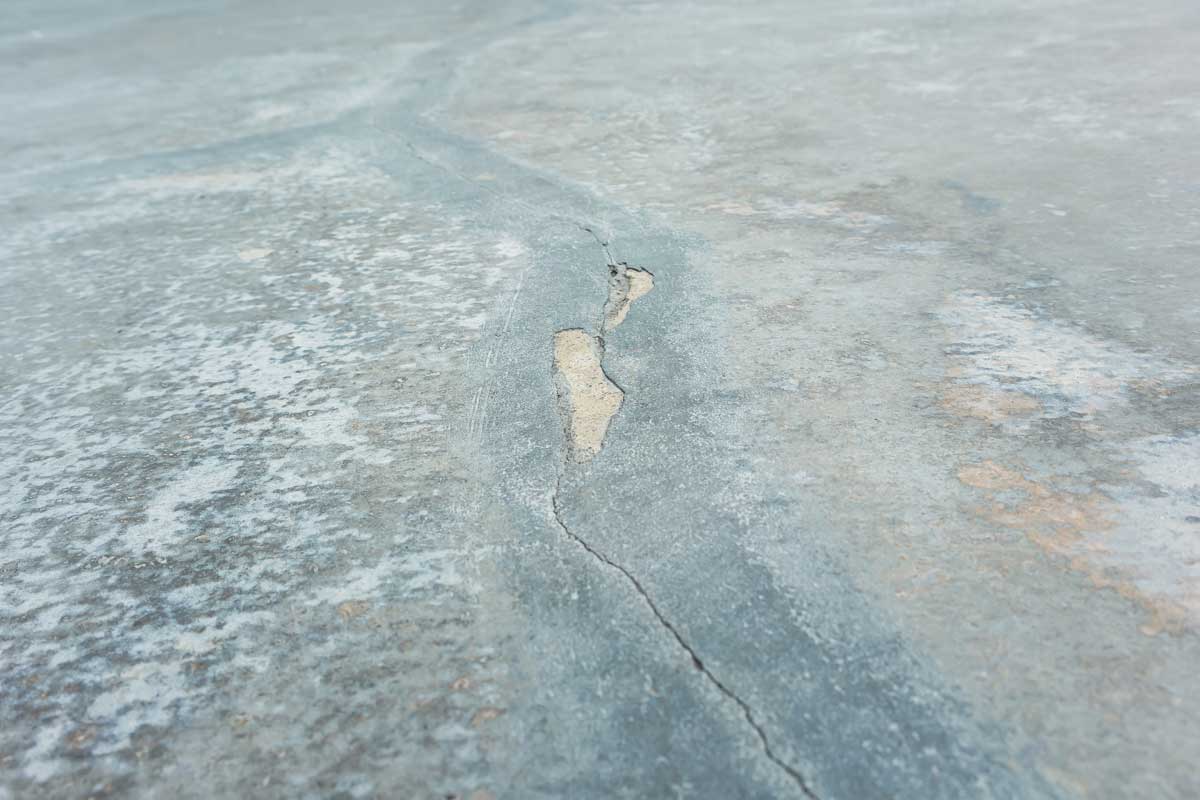Decorative Concrete Care in Winter
Concrete care in winter is important to master in much of the country. Without proper concrete care, in winter decorative concrete can face serious threats and damage. Decorative concrete isn’t necessarily more prone to damage in winter, but is arguably more necessary to protect it. If a plain gray concrete slab looks bad, it’s not usually a big deal. But if a decorated stamped concrete patio is visually affected, there’s a greater impact.

What causes concrete damage in winter?
The two main culprits are chloride penetration and freeze thaw cycling. These two factors overlap and work in conjunction to deteriorate concrete faster.
Freeze thaw cycling is what happens when concrete goes above and below freezing temperatures. Concrete is very porous. Even fully cured concrete can hold a lot of moisture. Every time the slab freezes or thaws, the moisture expands and contracts. This puts strain on the concrete as it is repeatedly pushed and stressed. Over time, this can cause cracking, scaling, and pop outs. These defects, in turn, can make concrete more susceptible to future damage. Contrary to conventional thought, colder conditions do not pose the greatest threat to concrete. The coldest regions will get cold and stay that way. More temperate areas will cycle more frequently, sometimes several times a day. It’s not unheard of for some areas to undergo a hundred or more cycles each winter.
Chloride is another major problem for concrete in cold weather. Chlorides are a range of chemicals sometimes used to melt ice and reduce slip risks. Sodium chloride (rock salt), calcium chloride, and magnesium chloride are all common deicers. Chlorides can penetrate the concrete and react adversely with it. This can take the form of efflorescence, alkali-silica reaction, and other deterioration. Each one can have a different visual or structural impact on concrete. Other common deicers, such as those using ammonia will also chemically attack the concrete and degrade it over time. Chemical deicers will also have the effect of increasing the number of freeze thaw cycles as they are used.

How to prevent concrete damage in winter?
Concrete care in winter starts with good design and installation. For example, areas with freeze thaw conditions should have sufficient entrained air to allow moisture room to expand without damaging the concrete. Good finishing practices should be used to reduce potential failure points. Reinforcing fibers can also be helpful in creating more resilient concrete. Check with your ready mix producer and relevant guidelines from professional organizations like the ACI or ASCC for best practices.
Sealing is a big part of concrete care in winter, too. Making sure the surface is sealed and that sealer remains in good shape can significantly reduce the effects of winter. Periodically resealing will not only improve the concrete’s performance, but it will make the concrete look better. Penetrating sealers and so-called “salt guards” are the best choices for this purpose. The chemically bond to the concrete and close capillaries. This makes the concrete resistant to water and chloride penetration. By keeping moisture and salts out of the concrete, much of the harm caused by winter conditions can be mitigated. Densification, from a densifier or a colloidal silica finishing aid, can also help with this.
Simple upkeep also helps. Maintain and keep the concrete clean throughout the year. Avoid using deicers for the first winter on a new concrete slab. If deicers must be used, sodium chloride (rock salt) and calcium chloride are preferred to ammonium nitrates and ammonium sulfates. If possible, use sand to improve traction instead of deicing chemicals. Be careful when plowing or shoveling snow because the shovel or blade may scratch or chip the surface. Avoid metal shovels.
Decorative concrete care in winter is simple. Follow these guidelines to keep your stamped concrete, colored concrete, or exposed aggregate surfaces in good condition for years to come.
See More

